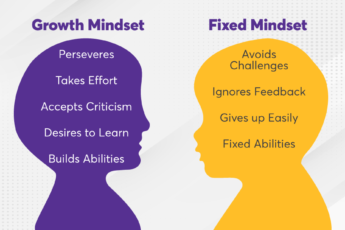The Importance of Design Thinking in Modern Education
Design thinking has long been considered a valuable skill in the product and service industry, but with the changing landscape of the job market, it has become essential for students to be proficient with the skill before they enter the workforce. Design isn’t limited to just brand recall value or aesthetics – it’s about creating solutions that address specific problems and fulfill needs of an end user.
Design thinking teaches one to adapt a problem-solving attitude, learn to pivot their ideas, and have a more creative approach at developing innovative solutions. This kind of perspective prepares children for the future, encouraging them to expand their curiosity and learning by pursuing careers in engineering, architecture, and product design, among others. Keeping the myriad benefits of design-thinking skills, it needs to be inculcated in the curriculum to help children keep pace with the fast-evolving industry. With this core skill, students will be better equipped to tackle future challenges and contribute to society’s growth and development.
Last year, the Central Board of Secondary Education (CBSE) planned to roll out books for classes 7 to 12 to supplement the courses already introduced for Class 6 students in many schools. The course was developed jointly by CBSE, the Innovation Cell of the Education Ministry, and IIT-Bombay as a skill development curriculum. It aimed to equip students with the tools and exposure required to solve problems using the design thinking process.
💡What is Design Thinking?
Let’s dive deep into the subject. Design thinking methodology is a problem-solving methodology that aims to find integrated solutions that address all aspects of a problem. It involves looking at the problem from a holistic perspective and taking a systematic approach to finding a solution. This process requires an open mind and a willingness to take risks, as it involves exploring new ideas and taking an iterative approach to problem-solving.
Design thinking can be applied in any area of education, from teaching and learning to assessment and curriculum development. Using this, educators can engage with students to solve problems together, tapping into their creativity and innovation skills. This process involves asking questions, generating ideas, and testing them out, iterating on those ideas until a functional solution is met with.
For example, if students are struggling to understand a particular concept in a subject, design thinking can be used to find a solution that addresses their needs. This might involve brainstorming different teaching methods, testing them out with students, and iterating on the approach until the students can grasp the concept. Here’s how design thinking will help students:
💡Fostering Creativity
By incorporating design thinking methodology into the school curriculum, students are encouraged to think creatively and develop innovative solutions to real-world problems. This helps foster creativity and imagination by promoting a mindset open to new ideas and perspectives. Thinking outside the box can equip students to tackle complex problems and come up with unique solutions.
💡Enhancing Critical Problem-Solving Skills
Design thinking in education can give students exposure to a problem-solving approach that is creative and critical. This encourages students to identify problems, break them down into smaller goals, and develop innovative solutions through collaboration and testing.
💡Developing an Entrepreneurial Mindset
By encouraging students to think creatively, they are more likely to become entrepreneurs who can create jobs and contribute to the economy. This approach promotes an entrepreneurial mindset to drive innovation and economic growth, both necessary for a thriving society.
💡Building a Sustainable Future
Design thinking in education emphasizes on factors such as sustainability and environmental impact when developing solutions. Students can create practical and environmentally friendly solutions by integrating this approach into the school curriculum. Promoting responsible decision-making and sustainable practices can help build a sustainable future for generations.
The Bottom Line
The education system is undergoing a paradigm shift. The ability to innovate, think creatively, and solve problems through the lens of design are becoming more important than ever before. Many schools are already incorporating these concepts into their curricula, but more can be done to help students understand what it means to be innovative and how they can apply that knowledge in their lives.
The integration of design thinking in school curriculum is necessary for the students to understand how to adapt to the changing environment. It will help them be more productive in their daily lives by using their creativity, problem-solving skills, and knowledge as the basis for decision making.
Square Panda India assists educators in implementing unique instruction to improve the effectiveness of their classroom sessions. We promote the use of dynamic teaching strategies by schools, administrators, and teachers to help students comprehend and accept change.




Leave a Comment